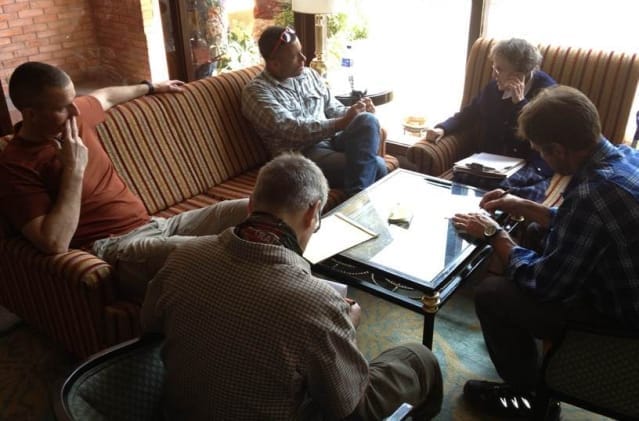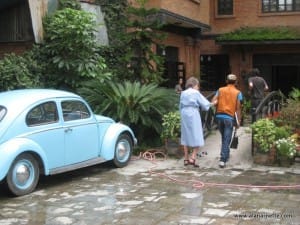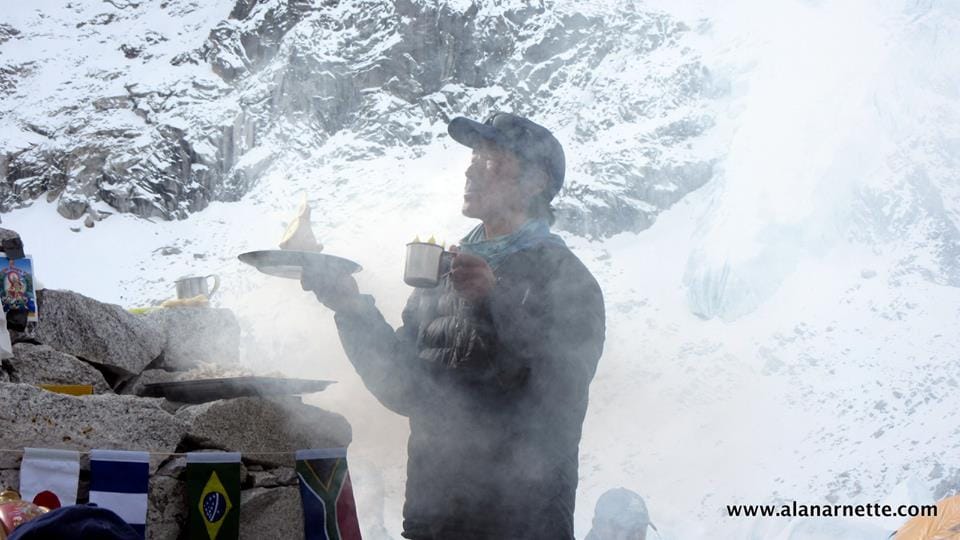In a major strategic change, the Bible of Himalayan climbs will now be free and available for download to anyone after November 1, 2017 in late November 2017 from their website.

The Himalayan Database (HDB) has been the final word on whether a climber summited one of the high peaks in Nepal and Tibet for over half a century. Created by Ms. Elizabeth Hawley and turned into a searchable database by Richard Salisbury, the HDB became an invaluable research tool for climbers, historians and journalist.
The HDB is a compilation of records for all expeditions that have climbed in the Nepalese Himalaya. The data cover all expeditions from 1905 through present day for more than 340 significant Nepalese peaks. Also included are expeditions to both sides of border peaks such as Everest, Cho Oyu, Makalu and Kangchenjunga as well as to some smaller border peaks. Data on expeditions to trekking peaks are included for early attempts, first ascents and major accidents.
The database is searchable by peak, climber, expedition, nationality, season, mortality rates and causes and more. There are selected preset reports plus the capability for custom searches and analyses.
I interviewed Richard in 2013 to explore his role as the data base curator and publisher of the CD version. Richard is a retired computer analyst who specialized in databases while at the University of Michigan. The interview covers a lot of topics and provides interesting insights into Everest statistics and her climbers.
I met Elizabeth Hawley, aka Liz or Ms. Hawley, in 1999 before a climb of Cho Oyu. She lived up to her reputation with sharp questioning and a no-nonsense style both then and again in 2013 before my climb of Manaslu. Now with Ms. Hawley entering her mid 90’s, long time assistant Billi Bierling has taken over the primary role of gathering data from climbers.

With the database going free, I asked Billi for some background and Richard on what might change in the new version.
AA:When did the HDB begin?
BB: Miss Elizabeth Hawley started archiving expeditions with the first American Everest expedition in 1963. She covered it for Reuters. She found the work and interviews interesting and carried on. However the actual Himalayan Database was created when Richard Salisbury approached Miss Hawley after climbing Annapurna 4 in 1991 and proposed the digitalization of the data for her. It took around 10 years for two Nepali ladies to feed in the data and in 2004 The Himalayan Database was released on a CD Rom.
AA:How did Ms. Hawley do all the interviews alone for so many years?
BB: At the beginning it was easy as there were only a few expeditions per year. She actually went to the airport in her beetle (there were only a few international flights per week), checked out the passengers coming off the plane and she approached those wearing obvious mountaineering boots. So it was possible to do for a long time.
She did have some helpers and I know in the 90s there was an American girl who helped her but as life so often does, she had to go back to the states. I think Jeevan Shrestha started helping her in 2000 and I came in 2004. There were some other people involved but mostly only for a season or two but now we seem to have a solid team of Jeevan Shrestha, Rodolphe Popier and Tobias Pantel.
AA:Any guess how many climbers/teams you interviewed just this Autumn?
BB: About 130 expeditions… mainly to Manaslu and Ama Dablam … but also to more interesting peaks such as Nangpai Gosum and Burke Khang
AA:Who is the primary user of the HDB?
BB: Mountaineers looking for a new route or want to repeat one; people who want to be the first of something get in touch with us to check; journalists who need data for their stories; people like you or Eberhard Jurgalski to check facts .. or people who are just fascinated by the data.
AA:Will Richard Salisbury continue on the team? And what is his role now?
BB: Richard IS the Himalayan Database. Without him we wouldn’t have what we have. He has dedicated his later life to the database and he does all the data entry, created the online version, compensates our helpers to cover their expenses and for me he is the hub of our work, even though he is not in Kathmandu. So yes he will continue as we need him and wouldn’t have the Himalayan Database without him.
At this point, I spoke with Richard and took some of the our 2013 interview:
AA:How do you work together with Ms. Hawley in Kathmandu and you in Michigan?
RS: We have a system set up where we can both work independently on our own copies of the database. Then periodically I reconcile the changes we have both made to the database by using a program that compares our changes and merges them into a new combined/updated database. Where we have conflicting changes, the program allows me to select the proper updates for the new database. I also travel to Kathmandu twice a year in April and October so that we can further discuss conflicting, unclear or missing information. Visiting Liz during the two principle climbing seasons also gives me a chance to meet many of the team leaders.
AA: Richard, I had heard that the HDB was going to be taken over by the American Alpine Club. Obviously this didn’t happen. Can you tell us why?
RS: There was never a plan for the AAC to completely take over the HDB. The AAC is interested in providing access to the data as they did with the publication of the original version in 2004, but they do not want to take over the data collection efforts. To continue with the data collection, the HDB was reorganized into a non-profit organization this last summer. By being a non-profit we are hoping to attract some sponsorship so that we can reimburse the data collectors in Kathmandu for their expenses. Also the decision was made to make the HDB available free of charge which is more in keeping with our being a non-profit. The money that we got for selling the original CDs was very minimal and probably covered less than 1% of the costs of creating and maintaining the database.
In the future the AAC may provide on-line browser access to the database for the most commonly used features, but transferring the all of the capabilities of the HDB program to browser access would be a monumental task and probably not practical to attempt.
The AAC Library will also be housing Elizabeth Hawley’s written records as she has left them to the AAC in her will. This will be a huge task to transport and properly curate her records so that they can be available in a useful format to researchers. The HDB contains most of her information from 1985 onwards, but the earlier records starting in 1963 contain a wealth of correspondence that never made it into the database (periodic mail-runner notes from teams, interim press releases to local newspapers and the Reuters News Service, etc.).
AA:Billi, what impact do you think there will be from making the HDB free?
BB: I am extremely happy that we are finally able to reach all the trekking agencies and make it available to them as without their willingness to share their information with us we wouldn’t be able to do our job. And of course it’s also great to make it available to all the climbers and expedition leaders, who take their precious time to talk to us. So thanks to them all!
AA:Will it be the same product i.e. database and report structure that we use now on the CD version?
BB: Yes but slightly modified. So for those who have the cd rom version please be aware that they will also have to download the new version as the old version cannot be updated.
AA:Will there any new features?
RS: We are upgrading the version of Microsoft Visual FoxPro used from version 6 to 9. The newer version will make available some new features that we might be able to take advantage of in the future. We are also revising the data structures a bit to remove some unused fields and eliminate a couple of fields that were not all that useful. We are also providing some additional methods of using the HDB with Macs.
AA:How do you certify a summited’s claims. There seems be a trend of false summit claims.
BB: We don’t certify a climb. We are taking the data and unless there is a huge discrepancy or evidence against a claim we believe the climber. We are collecting data and don’t certify. Maybe it’s best to compare it with a survey people do. If you lie about your medical problems in a medical survey the data is wrong. But as i said above of course we try and get the true story as mich as we can.
AA:Will the HDB ever expand to include the 8000ers in Pakistan?
BB: Not that we are planning to. I wouldn’t know how to cover it and fortunately there is Eberhard Jurgalski of research who does an amazing job in covering it.
Thanks to everyone associated with the Himalayan Database for an incredible job of tracking the summits all these years.
Climb On!
Alan
Memories are Everything


 BB: At the beginning it was easy as there were only a few expeditions per year. She actually went to the airport in her beetle (there were only a few international flights per week), checked out the passengers coming off the plane and she approached those wearing obvious mountaineering boots. So it was possible to do for a long time.
BB: At the beginning it was easy as there were only a few expeditions per year. She actually went to the airport in her beetle (there were only a few international flights per week), checked out the passengers coming off the plane and she approached those wearing obvious mountaineering boots. So it was possible to do for a long time.

One thought on “Himalayan Database Now Free!”
Thanks Alan !!! Love hearing any & all news. You are my reliable source!!!
Comments are closed.